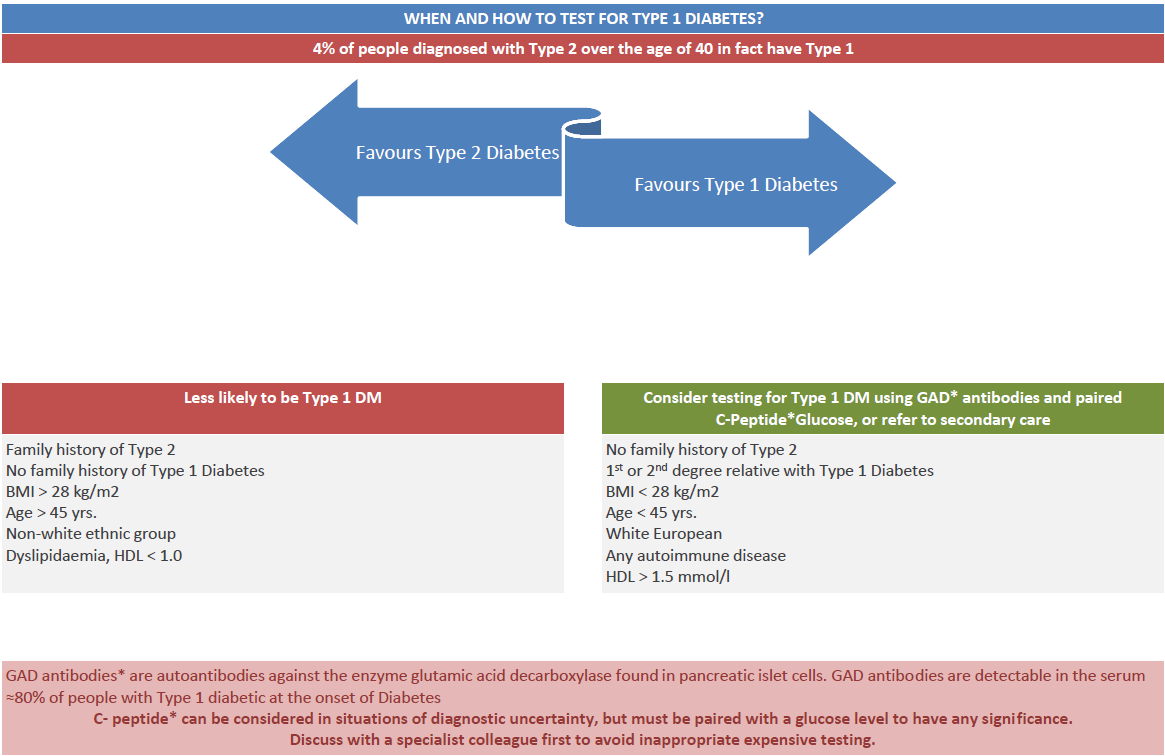Features differentiating between type 1 and type 2 diabetes mellitus
differentiating between type 1 and type 2 diabetes
Clinical and biochemical clues to differentiate type 1 from type 2 diabetes
Factors favouring (but not indicative of) type 1 diabetes (1):
- rapid onset of osmotic symptoms
- normal or low body weight or rapid weight loss
- ketonaemia >=3mmol/l on capillary testing or ketonuria
- family or personal history of other autoimmnune conditions
- failure to respond to oral therapy
- positive antibody test (anti-GAD, insulin autoantibodies (IAA) and islet cell antibodies (ICA) most commonly used)
- urine C-peptide:creatinine ratio less than 0.5nmol/l
The presence of one or more of these clues may point to a diagnosis of type 1 diabetes but absence does not exclude it (1).
A schemata for helping to to distinguish Type 1 from Type 2 diabetes has been detailed (2):

Reference:
- (1) The Association of British Clinical Diabetologists (ABCD) 2016. Standards of care for management of adults with type 1 diabetes
- (2) The North West London Health and Care Partnership. North West London Diabetes Guidelines (Accessed 17/6/2020).
Related pages
Create an account to add page annotations
Annotations allow you to add information to this page that would be handy to have on hand during a consultation. E.g. a website or number. This information will always show when you visit this page.